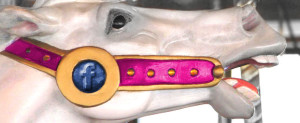May 2
Oh that age old question: What makes a perfect Facebook post?! Alright, so it’s not exactly an age-old question, but it’s certainly a good one. Making your Facebook page engaging is a top priority for social recruiting. That’s why we spend so much time on this blog writing about Facebook best practices, but words can only help so much. Which is why sometimes you simply need to consult an Infographic. This picture’s definitely worth a thousand words: Blueprint For The Perfect Facebook Post (an Infographic from Salesforce blog)Read More









